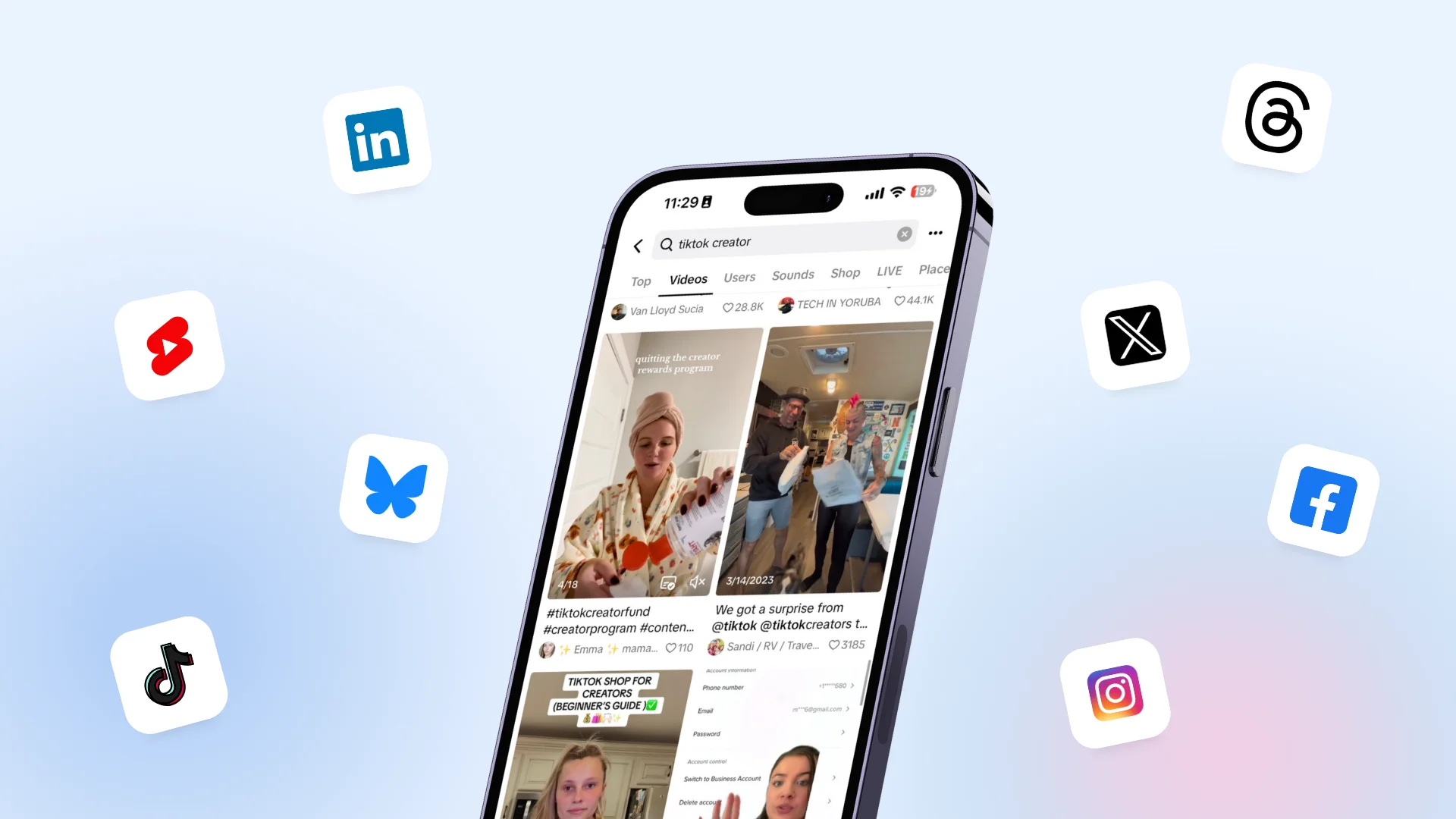New

Turn Your DMs Into Lead Gen!
Learn how to collect lead data from your DMs such as email addresses, phone numbers, and more right from your social inbox. If you are not yet automating your DMs your competitors are outpacing you.

How Something Social Saved 75% of Their Time and Increased Revenue by 15%
See how a fast-growing agency improved operations, cut down hours of manual work, and unlocked new revenue opportunities with Vista Social.
New

50 Unique Social Media Ideas for Consistent Content Creation
Discover 50 unique social media post ideas to engage your audience, grow your brand, and maintain a consistent content strategy with ease!

Mastering Content Reuse: The Key to a Consistent and Sustainable Posting Strategy
Emoji
An emoji is a small icon used to represent an emotion, symbol or object. Emojis commonly appear in communication applications, such as social media apps and text messaging systems. Over the years, emojis have appeared on everything from Instagram and Facebook to business communication systems like Slack.
In 2015, professor Vyv Evans from Bangor University named emojis the fastest growing language in the UK. Since then, the popularity of emojis has continued to grow as people look for more ways to express themselves online.
Where did emoji come from?
Emojis have been a part of the digital landscape since 1999 when a Japanese designer called Shigetaka Kurita designed the first emoji for a cellphone. The concept of emoji reached global popularity in 2012, when Apple released their iOS 6 system, including a feature to send icons in their text messages. Now, it’s possible to access a library of emoticons on any app by tapping on the smiley face on your phone’s keyboard.
Because emojis typically represent a specific feeling or thought, they’re used to give depth and context to a message. Many people use emoji to:
- Integrate humor into a message.
- Express themselves online.
- Communicate beyond words or enhance the meaning in their messages.
The benefits of using emojis
Emojis are powerful in both everyday life and marketing strategies. Brands who use emojis in the subject lines of their emails see a 45% increase in open rates on average. The primary reason for this is that emojis represent a universal language that almost every customer resonates with. Beyond the universal appeal of emojis, additional benefits include:
- A unique way to connect with customers: Though emoji appeal in the digital world, they provide companies with a way to introduce a more “human” experience to online interaction. -By mimicking facial expressions and emotions, companies use emojis to convey the nuances of face-to-face interactions.
- Enhance communication: It’s often difficult to determine the tone of voice or meaning behind a message written on a smartphone or a social media post. Emojis help to give context to written text and show what a person was feeling as they typed.
- Demonstrate personality: Many brands today use emojis to convey the human side of their businesses. In a world where customers struggle to trust faceless corporations, emojis open up a company’s playful side.
- Drive responses: The use of emoji to convey feelings often encourages other people to share their own emotions in response. Many social media sites are now using emojis as “reactions” to let people demonstrate how they feel about posts without words.
When to use emojis
Try Vista Social for Free
A social media management platform that actually helps you grow with easy-to-use content planning, scheduling, engagement and analytics tools.
Get Started NowAlthough emojis are beneficial in many online interactions, it’s crucial to use them correctly. Emojis are best suited to conversations with younger generations who have grown up using the icons to express themselves. The best time to use emojis is:
- When you know your audience feels comfortable with them
- When you’re adding additional context to a post
- When you’ve selected your images carefully
- When you’re building an engaging experience for customers
Avoid using too many emojis in a single post and remember that certain icons have hidden meanings. Be sure to research the social definition of an emoji before you post it online.

stronger relationships on social
Vista Social helps you understand and reach your audience, engage your community and measure performance with the only all-in-one social media management with easy-to-use features like publishing, engagement, reviews, reports and listening.